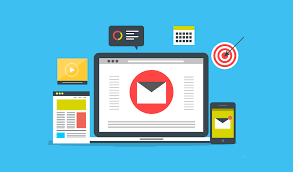The ability to analyze email is an effective instrument for optimizing email marketing campaigns. It can provide important insight into how recipients interact with your messages. Understanding these metrics can significantly enhance your strategies, increase engagement rates, and ultimately improve the performance of your company.
1. Open Rate
One of the most important metrics in email analytics includes the number of open rates, which reflects the percentage of people who read your email in relation to the total number of emails that are sent. A high open rate suggests that the subject line and preview text are appealing, however it’s important to remember that this measure alone does not guarantee engagement. Factors such as email client settings, spam filters, and even timing play a role.
2. Click-Through Rate (CTR)
The click-through percentage measures the proportion of recipients who clicked hyperlinks within your email. This metric is crucial for assessing the effectiveness of your call-to-action (CTA) and also the overall relevancy to your message. A high CTR means that your email content is a hit with your readers and inspires users to take actions.
3. Conversion Rate
Conversion rate goes a step further by calculating the percentage of people who have completed an action they wanted to do after clicking through your email, such as purchasing a product or signing up to attend a webinar. This measure is crucial to evaluate the effectiveness for the email campaigns and determining how your email generates tangible results.
4. Bounce Rate
The bounce rate is the percentage of emails that were not successfully delivered to the inboxes of recipients. There are two types of bounces: soft and hard. Soft bounces can be temporary, such as a full inbox or server issue while hard bounces last forever and include invalid email addresses. Monitoring bounce rates helps maintain a clean email list and boosts the delivery speed.
5. Unsubscribe Rate
This number indicates the percentage of people who have opted out of receiving further email messages. Unsubscribe rates that are high could signal that your content is not meeting the expectations of your readers or your frequency is too high. Regularly analyzing this rate helps to refine your content strategy and maintain an excellent relationship with your subscribers.
6. Engagement Over Time
Monitoring how engagement metrics change over time can give you insight into trends and patterns in your audience. For example, monitoring the way opens and CTRs change after various kinds of campaigns and seasonal promotions can help you determine what works best and adjust your strategies accordingly.
7. A/B Testing
A/B or split testing, is the process of sending different versions of an email to segments of your target audience to determine which is more effective. By comparison of metrics like opening rates, CTR, and conversions between the different variations, you are able to refine your approach and increase the effectiveness of your overall campaign.
In short, email analytics provides a wealth of information that can make it easier to implement more effective email advertising strategies. By focusing on important metrics such as open rates, click-through rates, conversion rates, bounce rates and unsubscribe rate, and leveraging A/B testing and data-driven decisions to improve engagement and achieve your marketing goals.

